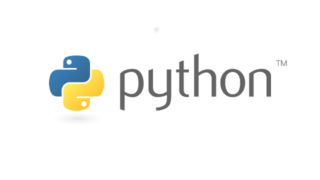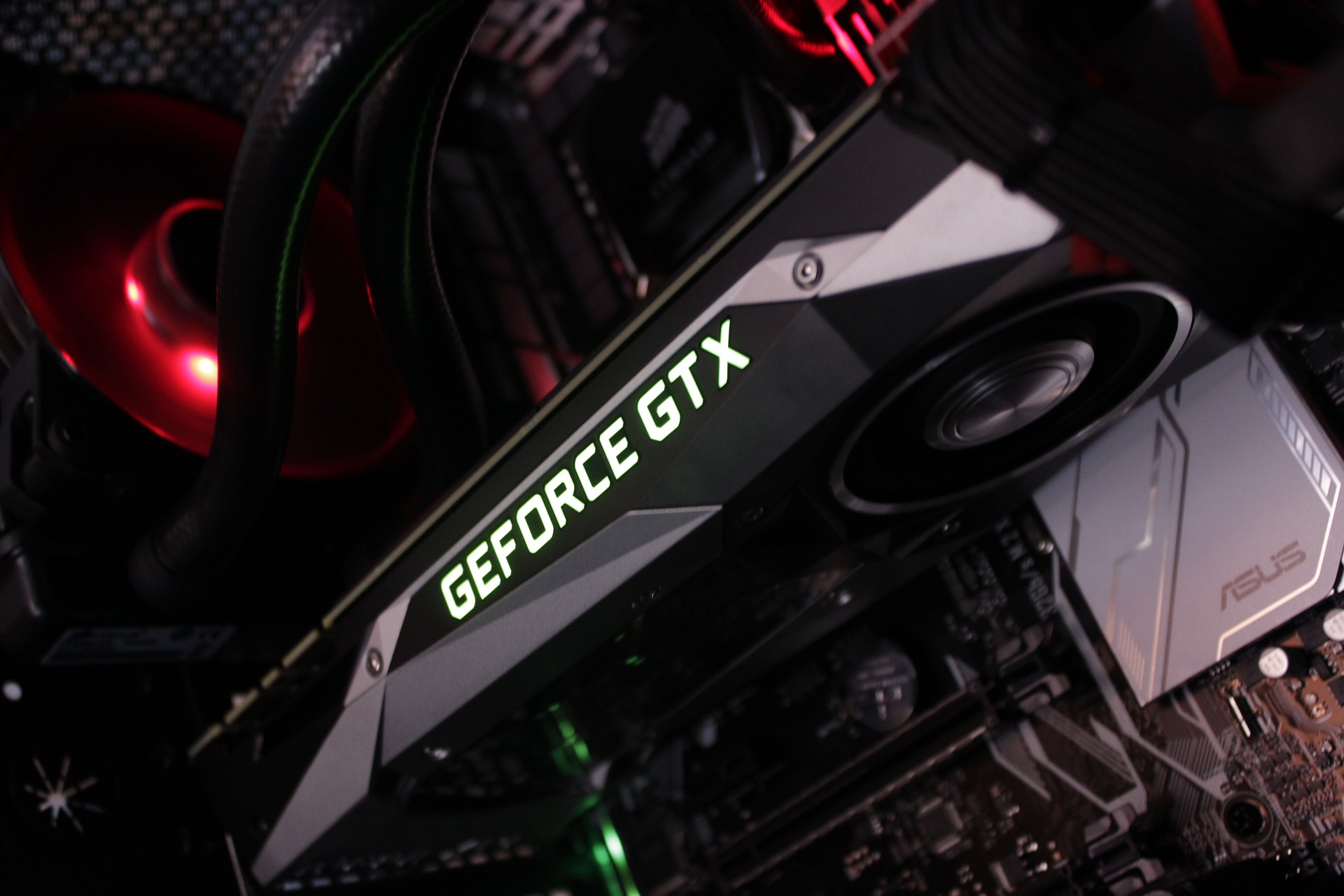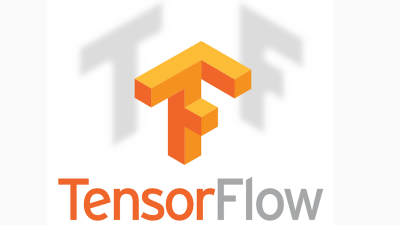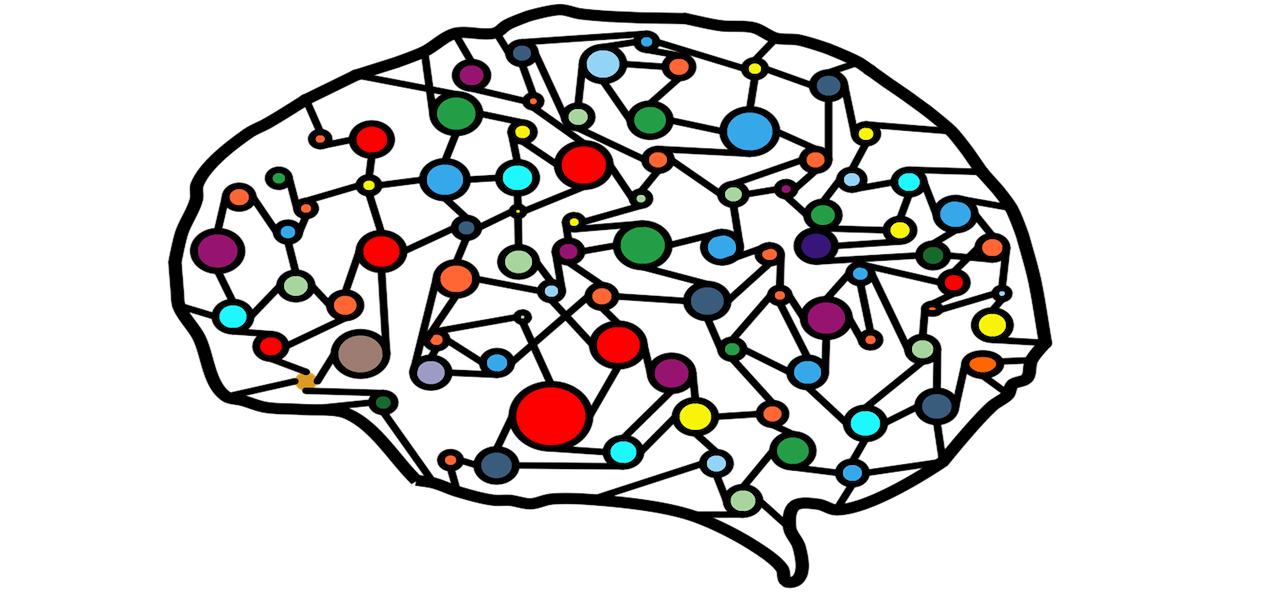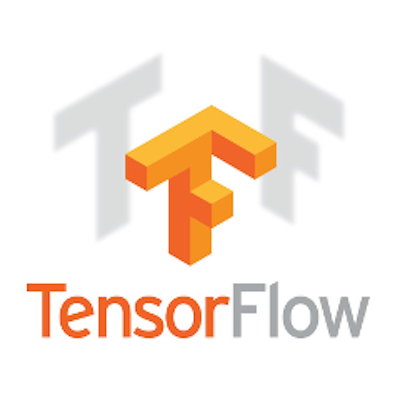TensorFlowによるCNNでMNISTの画像認識
今回は、TensorFlowでCNNについてメモします。
畳み込みニューラルネットワークをCNNと略します。
今までは、Kerasでネットワークを構築、学習させていました。
 Kerasで畳み込みニューラルネットワーク-簡単なCNNのコード-...
Kerasで畳み込みニューラルネットワーク-簡単なCNNのコード-...
今回は、TensorFlowを使います。
学習対象
学習対象は、MNISTの手書き数字です。
TensorFlowでCNNのモデル構成
※下の画像はイメージです。今回構築するモデルではありません。
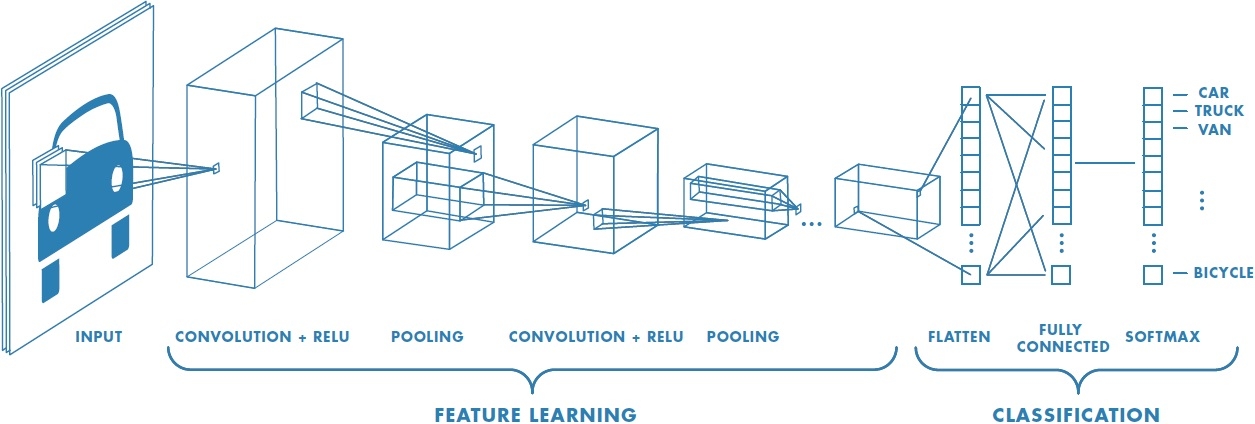
- 畳み込み層1
- プーリング層1
- 畳み込み層2
- プーリング層
- 全結合層
プログラム
#MNISTパッケージ
from tensorflow.examples.tutorials.mnist import input_data
import tensorflow as tf
mnist = input_data.read_data_sets("data/", one_hot=True)
#入力データを定義
x = tf.placeholder(tf.float32, [None, 784])
img = tf.reshape(x, [-1, 28, 28, 1])
#畳み込み層1
f1 = tf.Variable(tf.truncated_normal([5, 5, 1, 32], stddev=0.1))
conv1 = tf.nn.conv2d(img, f1, strides=[1,1,1,1], padding='SAME')
b1 = tf.Variable(tf.constant(0.1, shape=[32]))
h_conv1 = tf.nn.relu(conv1+b1)
#プーリング層
h_pool1 = tf.nn.max_pool(h_conv1, ksize=[1,2,2,1], strides=[1,2,2,1], padding='SAME')
#畳み込み層2
f2 = tf.Variable(tf.truncated_normal([5,5,32,64], stddev=0.1))
conv2 = tf.nn.conv2d(h_pool1, f2, strides=[1,1,1,1], padding='SAME')
b2 = tf.Variable(tf.constant(0.1, shape=[64]))
h_conv2 = tf.nn.relu(conv2+b2)
#プーリング層
h_pool2 = tf.nn.max_pool(h_conv2, ksize=[1,2,2,1], strides=[1,2,2,1], padding='SAME')
#全結合層
h_pool2_flat = tf.reshape(h_pool2, [-1, 7*7*64])
w_fc1 = tf.Variable(tf.truncated_normal([7*7*64, 1024], stddev=0.1))
b_fc1 = tf.Variable(tf.constant(0.1, shape=[1024]))
h_fc1 = tf.nn.relu(tf.matmul(h_pool2_flat, w_fc1) + b_fc1)
w_fc2 = tf.Variable(tf.truncated_normal([1024, 10], stddev=0.1))
b_fc2 = tf.Variable(tf.constant(0.1, shape=[10]))
out = tf.nn.softmax(tf.matmul(h_fc1, w_fc2) + b_fc2)
#誤差関数
#クロスエントロピー
y = tf.placeholder(tf.float32, [None, 10])
loss = tf.reduce_mean(-tf.reduce_sum(y * tf.log(out + 1e-5), axis=[1]))
#訓練
train_step = tf.train.GradientDescentOptimizer(0.01).minimize(loss)
#評価
correct = tf.equal(tf.argmax(out, 1), tf.argmax(y,1))
accuracy = tf.reduce_mean(tf.cast(correct, tf.float32))
#初期化
init = tf.global_variables_initializer()
#実行
with tf.Session() as sess:
sess.run(init)
#テストデータをロード
test_images = mnist.test.images
test_labels = mnist.test.labels
#Epoc数
for n in range(1):
Epoc = n+1
print('Epoc %d' % Epoc)
#学習回数
for i in range(1000):
step = i + 1
train_images, train_labels = mnist.train.next_batch(100)
sess.run(train_step, feed_dict={x:train_images, y:train_labels})
if step % 100 == 0:
acc_val = sess.run(accuracy, feed_dict={x:test_images, y:test_labels})
print('Step %d: accuracy = %.2f' % (step, acc_val))







